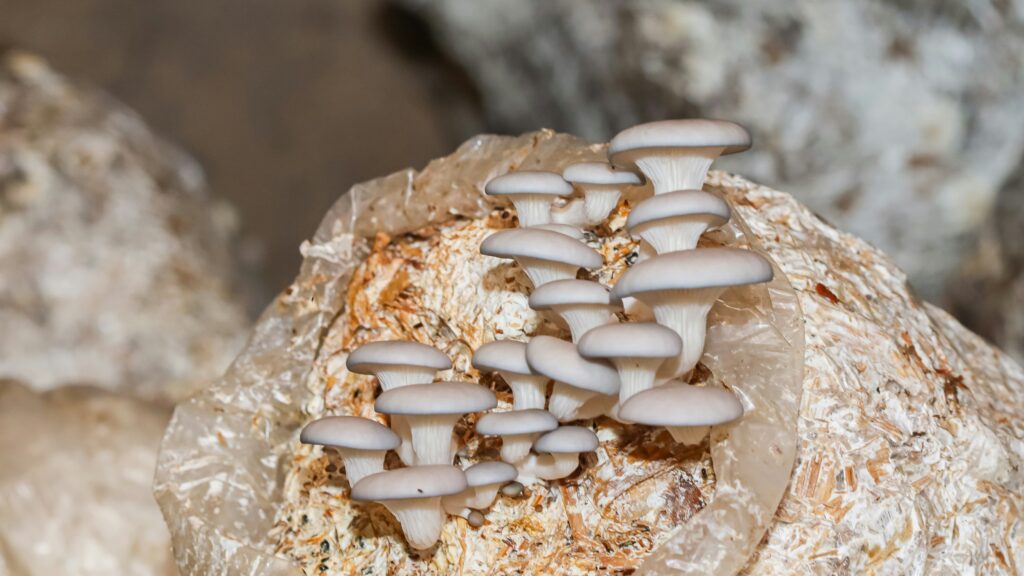Last Updated: June 12, 2025

Introduction: The Boom in Mushrooms
With increasing awareness around healthy eating, plant-based protein, and organic farming, mushroom farming is becoming one of India’s most promising agribusiness ventures. Whether in urban or rural settings, the low startup cost and high market demand make mushroom cultivation an ideal opportunity for aspiring farmers and entrepreneurs.
This step-by-step guide will help you understand every stage of the mushroom farming journey in India—covering market potential, types of mushrooms, cultivation techniques, costs, government support, and marketing strategies.
Section 1: Why Mushroom Farming Now?
1.1 Market Opportunity
- India’s mushroom market is growing at over 6.5% CAGR (Source: Statista), driven by demand in hotels, restaurants, and households.
- Urban consumption and exports have expanded significantly.
- Processed mushroom products like dried mushrooms, powders, and supplements are rising in popularity.
1.2 Economic Viability
- Initial investment can start as low as ₹50,000 for small-scale farming.
- Button mushrooms can yield ₹30–50 profit per kg, depending on region and market.
1.3 Government Support
- NABARD offers agri-startup credit.
- National Horticulture Board (NHB) provides subsidies under the MIDH scheme.
- ICAR–Directorate of Mushroom Research (DMR) offers technical training and support.
Section 2: Choosing Your Mushroom Type
| Type | Ideal Climate | Culinary Use | Beginner Friendly? | Market Demand |
|---|---|---|---|---|
| Button | 15–22°C, humid | Curries, pizzas, snacks | Medium | High (urban areas) |
| Oyster | 20–30°C, tropical | Stir-fries, soups | Yes | Medium to high |
| Milky | 25–35°C, warm | Indian dishes, pickles | Yes | Rural & semi-urban areas |
Section 3: Mushroom Cultivation Process (Step-by-Step)
3.1 Substrate Preparation
- Use paddy straw or wheat straw.
- Pasteurize via hot water treatment or steam sterilization.
- Ensure cleanliness to avoid contamination.
3.2 Spawning
- Mix spawn with substrate in sterilized conditions.
- Maintain spawn rate of 3–5%.
- Seal and incubate in dark, humid environment.
3.3 Incubation (Spawn Run)
- Maintain 80–90% humidity and 22–28°C temperature.
- Incubation lasts 12–20 days depending on mushroom type.
3.4 Casing (For Button)
- Use a mixture of soil and compost.
- Spread a thin layer over colonized substrate.
3.5 Fruiting
- Introduce light, fresh air, and reduced temperature.
- Water regularly with a mist sprayer.
- Mushrooms emerge in 7–14 days.
3.6 Harvesting
- Use a gentle twist or knife cut.
- Multiple harvests (“flushes”) occur every 7–10 days.
3.7 Pest & Disease Management
- Use neem oil or Trichoderma for fungal control.
- Avoid excessive watering and maintain hygiene.
Section 4: Cost Analysis & Profitability
| Scale | Initial Cost | Monthly Cost | Potential Monthly Income |
|---|---|---|---|
| Small | ₹50,000–₹70,000 | ₹10,000 | ₹20,000–₹30,000 |
| Medium | ₹1–2 lakh | ₹20,000–₹30,000 | ₹50,000–₹75,000 |
| Commercial | ₹5 lakh+ | ₹60,000+ | ₹1 lakh+ |
Note: Profitability depends on location, yield, marketing, and management efficiency.
Section 5: Training & Resources in India
- ICAR–DMR, Solan: dmrsolan.icar.gov.in
- Krishi Vigyan Kendras (KVKs): Offer on-ground training in all districts.
- Agricultural Universities: Punjab Agricultural University, TNAU, and others.
- Online Platforms: Courses via NPTEL, YouTube (e.g., Krishi Jagran, DMR YouTube Channel).
Section 6: Marketing & Sales Strategies
6.1 Marketing Channels
- Local vegetable markets & kirana stores
- Restaurants & hotels (HoReCa)
- Online grocery platforms (BigBasket, Zepto)
6.2 Value-Added Products
- Dried mushrooms
- Mushroom pickles
- Mushroom powder
6.3 Bulk & Export Sales
- Supply to processing industries
- Pharma companies for nutraceutical mushrooms
- Export to UAE, Europe, and Southeast Asia
Conclusion
Mushroom farming in India presents a promising avenue for income generation in 2025. With the right training, small investment, and market research, even beginners can establish a profitable venture. Start small, focus on hygiene and learning, and expand as you gain experience.
Ready to grow your future? Begin with proper training and tap into this growing agribusiness trend.
Author: Sandeep
Not a certified agricultural expert. This content is based on official resources and extensive research.









